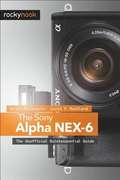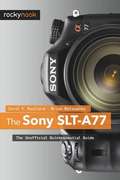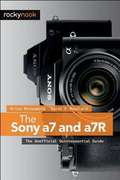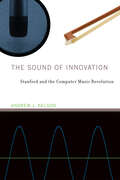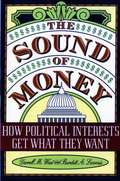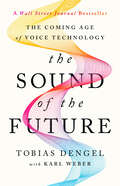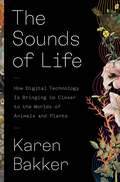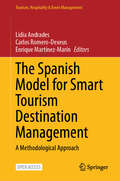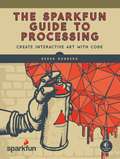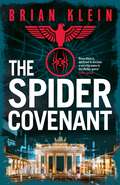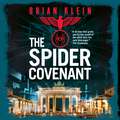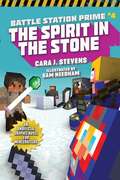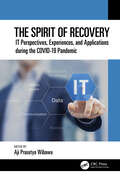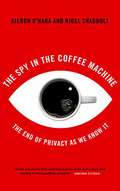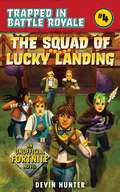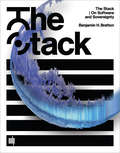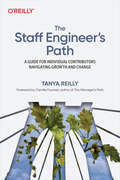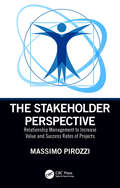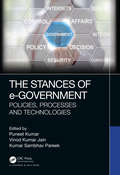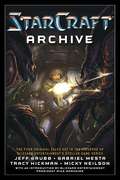- Table View
- List View
The Sony Alpha NEX-7
by Brian Matsumoto Carol F. RoullardThe Sony Alpha NEX-7: The Unofficial Quintessential Guide provides a wealth of experience-based information and insights for owners of this exciting new camera. Authors Carol F. Roullard and Brian Matsumoto team up to help the new user navigate past the confusion factor that often comes with complex and powerful camera equipment. This book explores the features and capabilities of the camera in a way that far surpasses the user's manual. It guides you through the camera features with step-by-step setting adjustments and detailed how, when, and why explanations for each option. Every button, dial, switch, and menu configuration setting is explored in a friendly manner, with suggestions and tips for setup according to various shooting styles. The informative text is illustrated with screenshots and example images throughout, making it easy to follow along. The authors cover everything from the basic features of the camera to numerous advanced photographic applications. The first section of the book teaches the new user to start taking pictures immediately by using the camera's Intelligent Automatic mode. The second section covers how to begin taking more control by switching to the semi-automatic modes. Finally, you'll learn to take full manual control of the camera, allowing you to break some "rules" and capture images that are a unique reflection of your creative personality. Carol and Brian go beyond just the camera itself and share how third-party software and optional accessories can improve on the camera's standard commands. You'll even learn how the electronic viewfinder, the fixed mirror, and Sony's novel shutter design improve the camera's utility for critical scientific photography (i.e., photomicrography and photography through the telescope).The Sony Alpha NEX-7: The Unofficial Quintessential Guide will allow you to really take control of your camera, to push the envelope, and to have fun.
The Sony SLT-A77
by Brian Matsumoto Carol F. RoullardThis book provides enthusiastic photographers with a wealth of information about the unique features of the Sony SLT-A77, an interchangeable-lens camera with an electronic viewfinder and a fixed, translucent mirror. The A77 differs from the current crop of DSLRs in its ability to use a phase detection focusing system throughout the entire picture-taking process, for both still photographs and videos. This provides an immediacy and responsiveness when using burst shots and creating HD videos that is unavailable in any other camera. In this guide, authors Carol Roullard and Brian Matsumoto teach you how to obtain exceptional photographs and videos as they cover everything from the basics of using the camera's automatic modes, to the more advanced aperture-priority, shutter-priority, program, and manual exposure modes. You'll also learn how best to take advantage of features such as the built-in dynamic range adjustment, sweep panoramic, GPS, colorization modes, facial detection and recognition, multiple shot exposures, and HD video. The authors provide you with an opportunity to improve your skills even further by discussing how third-party software and accessories can improve Sony's standard commands. You'll also learn about how the electronic viewfinder, fixed mirror, and Sony's novel shutter design improve the camera's utility for scientific photography through the microscope and telescope. Additional topics include:Advantages of the electronic viewfinder for previewing your photographs Using the accessory Sony shoe-mount flash Advantages of using the JPEG file format Advantage of having a fixed mirror and electronic first curtain shutter Settings for using the camera on a microscope and telescope Using the older Minolta Maxxum lenses
The Sony a7 and a7R
by Brian Matsumoto Carol F. RoullardThis book is a guide to using the Sony a7 and a7R, the first full frame, autofocus system cameras. At half the weight of a full frame DSLR, they are easy to carry for photographers on the go. The less-expensive a7 has a 24-megapixel sensor for shooting rapidly changing scenes; the a7R has a 36-megapixel sensor designed for ultimate image sharpness. Both use advanced image-processing algorithms and can use any manufacturer's lens when matched with the appropriate adapter. The electronic viewfinder gives the photographer an accurate preview of the image, ensuring the capture of technically excellent photographs by preventing mistakes in color temperature, depth of field, and exposure. All features of the a7 and a7R are covered, including automatic stitching to create panoramas, and multi-shot noise reduction that allows the use of extremely high ISOs. This book guides the photographer in using both the camera's automated features and manual controls to take photographs that are a unique reflection of his or her creative personality.
The Sound of Innovation: Stanford and the Computer Music Revolution (Inside Technology)
by Andrew J. NelsonHow a team of musicians, engineers, computer scientists, and psychologists developed computer music as an academic field and ushered in the era of digital music.In the 1960s, a team of Stanford musicians, engineers, computer scientists, and psychologists used computing in an entirely novel way: to produce and manipulate sound and create the sonic basis of new musical compositions. This group of interdisciplinary researchers at the nascent Center for Computer Research in Music and Acoustics (CCRMA, pronounced “karma”) helped to develop computer music as an academic field, invent the technologies that underlie it, and usher in the age of digital music. In The Sound of Innovation, Andrew Nelson chronicles the history of CCRMA, tracing its origins in Stanford's Artificial Intelligence Laboratory through its present-day influence on Silicon Valley and digital music groups worldwide. Nelson emphasizes CCRMA's interdisciplinarity, which stimulates creativity at the intersections of fields; its commitment to open sharing and users; and its pioneering commercial engagement. He shows that Stanford's outsized influence on the emergence of digital music came from the intertwining of these three modes, which brought together diverse supporters with different aims around a field of shared interest. Nelson thus challenges long-standing assumptions about the divisions between art and science, between the humanities and technology, and between academic research and commercial applications, showing how the story of a small group of musicians reveals substantial insights about innovation. Nelson draws on extensive archival research and dozens of interviews with digital music pioneers; the book's website provides access to original historic documents and other material.
The Sound of Money: How Political Interests Get What They Want
by Darrell M. West Burdett A. LoomisIn their compelling new book, The Sound of Money: How Political Interests Get What They Want, West and Loomis probe the connection between interest-group spending and congressional policy making. In recent years, important battles have been fought over health care reform, telecommunications deregulation, and Medicare, to name just a few. The interest groups most successful at influencing policy are those with the most money to spend on advertising and lobbying. West and Loomis caution that as the "sound" of money in American politics grows louder, this new group activism will increasingly affect-and maybe even threaten-the viability of representative government.
The Sound of the Future: The Coming Age of Voice Technology
by Tobias DengelA Wall Street Journal Bestseller A USA Today Bestseller Why voice technology is the next big thing in technology, as big as mobile a decade ago and the internet in the late 90s, fundamentally altering the way companies do business. Voice is the next technology – remarkably similar in potential impact to the internet and mobile computing - poised to change the way the world works. Tobias Dengel is in the vanguard of this breakthrough, understanding the deep, wide-ranging implications voice will have for every industry. In The Sound of the Future, he connects the dots about this emerging paradigm to vividly illustrate how business leaders can stay ahead of the game, rather than scrambling to catch up, as voice technology gradually reveals its power, creating a host of new winners and losers. Using fascinating, colorful stories, Dengel explains how the &“voice-first&” experience is becoming part of the global technology mainstream, exploring the ways voice will do a better job of serving basic human needs such as safety, speed, accuracy, convenience, and fun, as well as making it possible for hundreds of millions of people around the planet to participate more fully and productively in today&’s high-tech world by making interactions with technology virtually effortless. A pervasive technology like the internet and mobile, voice, with applications in marketing, sales, service, manufacturing, and logistics, will change the way we work at every level and every function, driving down costs, boosting productivity, and enabling the creation of entirely new business models. This is not simply about Siri and Alexa. They are the tantalizing but incomplete precursors of the ultimate interface that will make technology easier, faster, more accurate, and more human.
The Sounds of Life: How Digital Technology Is Bringing Us Closer to the Worlds of Animals and Plants
by Karen BakkerAn amazing journey into the hidden realm of nature&’s soundsThe natural world teems with remarkable conversations, many beyond human hearing range. Scientists are using groundbreaking digital technologies to uncover these astonishing sounds, revealing vibrant communication among our fellow creatures across the Tree of Life.At once meditative and scientific, The Sounds of Life shares fascinating and surprising stories of nonhuman sound, interweaving insights from technological innovation and traditional knowledge. We meet scientists using sound to protect and regenerate endangered species from the Great Barrier Reef to the Arctic and the Amazon. We discover the shocking impacts of noise pollution on both animals and plants. We learn how artificial intelligence can decode nonhuman sounds, and meet the researchers building dictionaries in East African Elephant and Sperm Whalish. At the frontiers of innovation, we explore digitally mediated dialogues with bats and honeybees. Technology often distracts us from nature, but what if it could reconnect us instead?The Sounds of Life offers hope for environmental conservation and affirms humanity&’s relationship with nature in the digital age. After learning about the unsuspected wonders of nature&’s sounds, we will never see walks outdoors in the same way again.
The Soundtrack Composer's Ultimate Guide to FL Studio: Learn to score films and games, compose orchestral music, and launch your music career
by Joshua Au-YeungCreate and compose production-quality music with the power of FL Studio 20 along with MuseScore and WwiseKey FeaturesDevelop widely applicable music composition techniques and create full orchestral scoresLeverage the power of FL Studio to create your own production-level soundtracksUse cutting-edge tools to fuel your creative ideas and launch your composer careerBook DescriptionFL Studio is a cutting-edge software music production environment and a powerful and easy-to-use tool for composing music. In this comprehensive guide, you'll discover how to use FL Studio's tools and techniques to design exciting soundtracks for your films, TV shows, video games, and much more. You'll start by understanding the business of composing, learning how to communicate, score, market your services, land gigs, and deliver music projects for clients like a professional. Next, you'll set up your studio environment, navigate key tools, such as the channel rack, piano roll, playlist, mixer, and browser, and export songs. The book then advances to show you how to compose orchestral music using MIDI (musical instrument digital interface) programming, with a dedicated section to string instruments. You'll create sheet music using MuseScore for live musicians to play your compositions. Later, you'll learn about the art of Foley for recording realistic sound effects, create adaptive music that changes throughout video games, and design music to trigger specific emotions, for example, eerie music to terrify your listener. Finally, you'll work on a sample project that will help you prepare for your composing career. By the end of this book, you'll be able to create professional soundtrack scores for your films and video games.What you will learnCompose production-ready music for films and video gamesPlan and deliver a soundtrack music score for clients like a professionalApply practical music theory using themes, leitmotifs, scales, and modesCompose orchestral music with MIDI programmingDesign music for specific emotionsCreate sheet music with MuseScore, score music for films with Fruity Video Player, and make diegetic musicDesign interactive music by leveraging horizontal resequencing and vertical remixingWho this book is forThis book is for musicians and programmers who want to take their music composing skills to a professional level. Film directors and game designers who want to get involved in scoring music for their own productions will also find this book useful. All you need is a computer and FL Studio to get started.
The Spanish Armada: A Ladybird Expert Book (The Ladybird Expert Series #30)
by Sam WillisPart of the ALL-NEW LADYBIRD EXPERT SERIES.____________Why did the Spanish launch their Armada on England?How did Francis Drake counter the Spanish threat?And why were so many ships lost at sea?In 1585 Spain was the most POWERFUL Empire in the known world.As tensions between PROTESTANT England and CATHOLIC Spain rose . . . SPAIN decided to INVADE ENGLAND. And launched the SPANISH ARMADA This raises the question: how did England manage to overthrow the Spanish invasion? Was it luck or judgement? Discover the answers and more inside Sam Willis's Ladybird Expert - The Spanish Armada, the thrilling and accessible account that explains what happened, who the key figures were and the tactics, triumphs and failures on both sides . . .
The Spanish Model for Smart Tourism Destination Management: A Methodological Approach (Tourism, Hospitality & Event Management)
by Lidia Andrades Carlos Romero-Dexeus Enrique Martínez-MarínThis is an open access handbook that guides destinations on their journey to becoming Smart Tourism Destinations (STDs). Developed by SEGITTUR, a distinguished Spanish State company, and aligned with academia represented by Professor Lidia Andrades, who has brought together recognized international academics with SEGITTUR experts in the field of tourism management to write this groundbreaking book, it offers practical insights and strategies for success. Explore the characteristics and implications of smart destinations, across the five dimensions which structure them: destination governance, accessibility, technology, innovation and sustainability, navigate the transition from traditional tourism management to the innovative smart managerial paradigm, and overcome challenges encountered during the transformative process. Equipping destination managers with essential tools and strategies, this handbook showcases real-life examples of Spanish destinations embracing the smart tourism paradigm. Drawing on SEGITTUR's proven methodology, it provides precise guidance, checklists, and expert recommendations for effective implementation. An invaluable resource for destination managers, tourism professionals, and researchers, it unlocks the full potential of smart tourism destinations.
The SparkFun Guide to Processing
by Derek RunbergProcessing is a free, beginner-friendly programming language designed to help non-programmers create interactive art with code.The SparkFun Guide to Processing, the first in the SparkFun Electronics series, will show you how to craft digital artwork and even combine that artwork with hardware so that it reacts to the world around you. Start with the basics of programming and animation as you draw colorful shapes and make them bounce around the screen. Then move on to a series of hands-on, step-by-step projects that will show you how to:–Make detailed pixel art and scale it to epic proportions–Write a maze game and build a MaKey MaKey controller with fruit buttons–Play, record, and sample audio to create your own soundboard–Fetch weather data from the Web and build a custom weather dashboard–Create visualizations that change based on sound, light, and temperature readingsWith a little imagination and Processing as your paintbrush, you’ll be on your way to coding your own gallery of digital art in no time! Put on your artist’s hat, and begin your DIY journey by learning some basic programming and making your first masterpiece with The SparkFun Guide to Processing.The code in this book is compatible with Processing 2 and Processing 3.
The Speedlight Studio
by Michael MowbrayIn this book, Michael Mowbray shows readers how to set up a completely speedlight-based portrait photography studio. He goes in depth regarding gear and techniques, providing photographers with scores of example portraits and lighting diagrams to make it easy to follow along and replicate the portrait lighting effects that he shows. Readers will learn about selecting speedlights (Mowbray covers Canon, Nikon, and third-party units), learning standard operations, and working with the units on the camera’s hot shoe (a connectivity device on top of the camera) or in the periphery for more flexible, controllable results. Readers will learn why modifying the light from speedlights will produce a lot more bang for their buck and will also discover a host of tools-commercial and DIY-that can be used to change the direction, color, and quality of light for the ultimate artistic control.
The Speedlight Studio
by Michael MowbrayIn this book, Michael Mowbray shows readers how to set up a completely speedlight-based portrait photography studio. He goes in depth regarding gear and techniques, providing photographers with scores of example portraits and lighting diagrams to make it easy to follow along and replicate the portrait lighting effects that he shows. Readers will learn about selecting speedlights (Mowbray covers Canon, Nikon, and third-party units), learning standard operations, and working with the units on the camera's hot shoe (a connectivity device on top of the camera) or in the periphery for more flexible, controllable results. Readers will learn why modifying the light from speedlights will produce a lot more bang for their buck and will also discover a host of tools-commercial and DIY-that can be used to change the direction, color, and quality of light for the ultimate artistic control.
The Spider Covenant
by Brian KleinOn 10 August 1944, with Germany on the verge of a crushing and humiliating defeat, Heinrich Himmler, the second most powerful Nazi and head of the notorious SS, holds a clandestine meeting in Strasbourg, with a handful of elite industrialists and bankers.A covert organisation is born, codenamed 'Die Spinne' - The Spider. The network is tasked with helping senior SS officers escape the clutches of advancing allied forces. New identities are created, bankrolled by illicit funds, allowing notorious criminals to begin new lives in Europe and South America. Many of them land key roles in the worlds of politics, banking and industry. Decades later, they're able to pass on a privileged and influential birth right to their descendants.Himmler's secret lovechild, Amelie, is also spirited out of Germany by 'Die ,armed with a Nazi nest egg of fifty million dollars. Eighty years on, Amelie's adopted son becomes the head of the Spider network, which has evolved, survived and prospered over the decades under a cloak of secrecy.Employing a level of AI technology years ahead of anything currently known, the Spider network operates a secret facility based in Strasbourg, capable of creating undetectable Deepfakes of their own extremist politicians: perfect avatars, capable of conducting live interviews on a video stream with any news outlet in the world. The computer 'brain' of the Deepfakes is linked to state-of-the-art AI machines, programmed to create the perfect politician, spouting extreme right-wing rhetoric, aimed at winning over the masses. At a time of world disorder, with bitter wars across and the Middle East, the leaders of the Spider network look to seize their opportunity of grabbing control of the levers of political power.
The Spider Covenant
by Brian KleinOn 10 August 1944, with Germany on the verge of a crushing and humiliating defeat, Heinrich Himmler, the second most powerful Nazi and head of the notorious SS, holds a clandestine meeting in Strasbourg, with a handful of elite industrialists and bankers.A covert organisation is born, codenamed 'Die Spinne' - The Spider. The network is tasked with helping senior SS officers escape the clutches of advancing allied forces. New identities are created, bankrolled by illicit funds, allowing notorious criminals to begin new lives in Europe and South America. Many of them land key roles in the worlds of politics, banking and industry. Decades later, they're able to pass on a privileged and influential birth right to their descendants.Himmler's secret lovechild, Amelie, is also spirited out of Germany by 'Die ,armed with a Nazi nest egg of fifty million dollars. Eighty years on, Amelie's adopted son becomes the head of the Spider network, which has evolved, survived and prospered over the decades under a cloak of secrecy.Employing a level of AI technology years ahead of anything currently known, the Spider network operates a secret facility based in Strasbourg, capable of creating undetectable Deepfakes of their own extremist politicians: perfect avatars, capable of conducting live interviews on a video stream with any news outlet in the world. The computer 'brain' of the Deepfakes is linked to state-of-the-art AI machines, programmed to create the perfect politician, spouting extreme right-wing rhetoric, aimed at winning over the masses. At a time of world disorder, with bitter wars across and the Middle East, the leaders of the Spider network look to seize their opportunity of grabbing control of the levers of political power.
The Spider Covenant (The Reich Trilogy)
by Brian KleinOn 10 August 1944, with Germany on the verge of a crushing and humiliating defeat, Heinrich Himmler, the second most powerful Nazi and head of the notorious SS, holds a clandestine meeting in Strasbourg, with a handful of elite industrialists and bankers.A covert organisation is born, codenamed 'Die Spinne' - The Spider. The network is tasked with helping senior SS officers escape the clutches of advancing allied forces. New identities are created, bankrolled by illicit funds, allowing notorious criminals to begin new lives in Europe and South America. Many of them land key roles in the worlds of politics, banking and industry. Decades later, they're able to pass on a privileged and influential birth right to their descendants.Himmler's secret lovechild, Amelie, is also spirited out of Germany by 'Die ,armed with a Nazi nest egg of fifty million dollars. Eighty years on, Amelie's adopted son becomes the head of the Spider network, which has evolved, survived and prospered over the decades under a cloak of secrecy.Employing a level of AI technology years ahead of anything currently known, the Spider network operates a secret facility based in Strasbourg, capable of creating undetectable Deepfakes of their own extremist politicians: perfect avatars, capable of conducting live interviews on a video stream with any news outlet in the world. The computer 'brain' of the Deepfakes is linked to state-of-the-art AI machines, programmed to create the perfect politician, spouting extreme right-wing rhetoric, aimed at winning over the masses. At a time of world disorder, with bitter wars across and the Middle East, the leaders of the Spider network look to seize their opportunity of grabbing control of the levers of political power.
The Spirit in the Stone: An Unofficial Graphic Novel for Minecrafters (Unofficial Battle Station Prime #4)
by Cara J. StevensAn evil spirit has invaded the Battle Station. Will the cadets be ready for the fight? Find out in the fourth installment of Battle Station Prime! With the Prime Knight by their side, the young cadets of the Battle Station are convinced that no enemy is a match for their forces. But when one of their own group gets possessed by an evil spirit, it will take everything they have to get their friend back and banish the spirit from the realm for good. Meanwhile, attacks are coming in from all sides. Waves of skeletons and zombies continue to assault the Battle Station and all of the outposts in the land. An unexpected alliance with a witch leads to an even more unexpected trip to the Far Lands, while a mission to discover the identity of their enemy will take the others through a desert temple. All of this is a lot of responsibility for six young warriors, and most of the Battle Station leaders are not sure they can handle it. But fortunately, Ned, the Prime Knight, believes these young heroes have what it takes to survive and succeed to save the Battle Station and the entire realm. Pell, Logan, Maddy, Brooklyn, Cloud, and Zoe will do everything they can to make sure his bet on them pays off. <P><P> <i>Advisory: Bookshare has learned that this book offers only partial accessibility. We have kept it in the collection because it is useful for some of our members. Benetech is actively working on projects to improve accessibility issues such as these.</i>
The Spirit of Recovery: IT Perspectives, Experiences, and Applications during the COVID-19 Pandemic
by Aji Prasetya WibawaThe scope of this book focuses on how information technology may assist in achieving goals and in providing solutions to problems such as a pandemic. Research on the Internet and on technology has been done, and the findings have applications in various sectors that rely on interdisciplinary knowledge. This book explores and describes state-of-the-art research conducted during the COVID-19 pandemic. Topics covered include the IT viewpoint and the rules governing digital transformation throughout the pandemic. The Digital Revolution sped up by a decade during COVID-19, which impacted both the user experience and that of software developers. As a component of the digital transformation process, this book explores the experiences of both the user and developer when attempting to change and adapt while utilizing an information technology program. This book includes five topics: (1) multidisciplinary artificial intelligence, (2) Smart City and Internet of Things applications, (3) game technology and multimedia applications, (4) data science and business intelligence, and (5) IT hospitality and information systems. Each topic is covered in several book chapters with some application in several countries, especially developing countries. The chapters provide insight from contributors with different perspectives and several diverse fields who present new ideas and approaches to solving problems associated with the worldwide pandemic.
The Spy In The Coffee Machine: The End of Privacy as We Know It
by Kieron O'Hara Nigel ShadboltWhat do you know about the new surveillance state that has been created in the wake of pervasive computing - that is, the increasing use of very small and simple computers in all sorts of host - from your computer to your coat? Well, these little computers can communicate via the web and form powerful networks whose emergent behaviour can be very complex, intelligent, and invasive. The question is: how much of an infringement on privacy are they? Could these intelligent networks be used by governments, criminals or terrorists to undermine privacy or commit crimes? From CCTVs to blogging, from cookies to RFID tags, we are sleepwalking into a new state of global hypersurveillance. And when even cans of Coke are connected to the internet, the risk of someone misusing this information is very high indeed. Kieron O'Hara is Senior Research Fellow in Electronics and Computer Science at the University of Southampton, UK. Nigel Shadbolt is Professor of Artificial Intelligence at the University of Southampton, UK, and was President of the British Computer Society in 2006-7.
The Squad of Lucky Landing: An Unofficial Fortnite Novel (Trapped In Battle Royale)
by Devin HunterGrey never expected his best friend, Finn, to end up trapped in Battle Royale as well, but now they both have to fight to get out. And there are only a few more weeks to do it. If Ben and Tristan hadn’t left Grey’s squad, he would have been a lot closer to the top five. But with the help of his new squad members, Grey is determined to climb back to the top. It won’t be easy when Grey’s old squad mates use his own tactics against him. He must use his creativity to find new ways to lead his squad back to the top twenty.
The Stack: On Software and Sovereignty (Software Studies)
by Benjamin H. BrattonA comprehensive political and design theory of planetary-scale computation proposing that The Stack—an accidental megastructure—is both a technological apparatus and a model for a new geopolitical architecture. What has planetary-scale computation done to our geopolitical realities? It takes different forms at different scales—from energy and mineral sourcing and subterranean cloud infrastructure to urban software and massive universal addressing systems; from interfaces drawn by the augmentation of the hand and eye to users identified by self—quantification and the arrival of legions of sensors, algorithms, and robots. Together, how do these distort and deform modern political geographies and produce new territories in their own image? In The Stack, Benjamin Bratton proposes that these different genres of computation—smart grids, cloud platforms, mobile apps, smart cities, the Internet of Things, automation—can be seen not as so many species evolving on their own, but as forming a coherent whole: an accidental megastructure called The Stack that is both a computational apparatus and a new governing architecture. We are inside The Stack and it is inside of us. In an account that is both theoretical and technical, drawing on political philosophy, architectural theory, and software studies, Bratton explores six layers of The Stack: Earth, Cloud, City, Address, Interface, User. Each is mapped on its own terms and understood as a component within the larger whole built from hard and soft systems intermingling—not only computational forms but also social, human, and physical forces. This model, informed by the logic of the multilayered structure of protocol “stacks,” in which network technologies operate within a modular and vertical order, offers a comprehensive image of our emerging infrastructure and a platform for its ongoing reinvention. The Stack is an interdisciplinary design brief for a new geopolitics that works with and for planetary-scale computation. Interweaving the continental, urban, and perceptual scales, it shows how we can better build, dwell within, communicate with, and govern our worlds.thestack.org
The Staff Engineer's Path: A Guide for Individual Contributors Navigating Growth and Change
by Tanya ReillyFor years, companies have rewarded their most effective engineers with management positions. But treating management as the default path for an engineer with leadership ability doesn't serve the industry well--or the engineer. The staff engineer's path allows engineers to contribute at a high level as role models, driving big projects, determining technical strategy, and raising everyone's skills.This in-depth book shows you how to understand your role, manage your time, master strategic thinking, and set the standard for technical work. You'll read about how to be a leader without direct authority, how to plan ahead to make the right technical decisions, and how to make everyone around you better, while still growing as an expert in your domain.By exploring the three pillars of a staff engineer's job, Tanya Reilly, a veteran of the staff engineer track, shows you how to:Take a broad, strategic view when thinking about your workDive into practical tactics for making projects succeedDetermine what "good engineering" means in your organization
The Stakeholder Perspective: Relationship Management to Increase Value and Success Rates of Complex Projects
by Massimo PirozziThe Stakeholder Perspective places people at the center of both projects and project management. It gives to the project management community a helpful, innovative, stakeholder-centered approach to increase projects’ delivered value and success rate. It presents a logical model also called the "Stakeholder Perspective," which acts as the reference point in a structured path to effectiveness. Starting from the analysis of a project’s stakeholders, the model integrates both rational and relational innovative approaches. Its continuous focus on stakeholder requirements and expectations helps to set a proper path, and to maintain it, in order to target success and to achieve goals in a variety of projects with different size and complexity. The book presents a set of innovative and immediately applicable techniques for effective stakeholder identification and classification, as well as analysis of stakeholder requirements and expectations, key stakeholders management, stakeholder network management, and, more generally, stakeholder relationship management. The proposed stakeholder classification model consists of just four communities, each one based on the commonality of main interests and behavior. This model features an accurate and stable identification process to increase effective communication and drastic reduce relationship complexity. A systemic approach is proposed to analyze both stakeholder requirements and expectations. The approach aids in detecting otherwise unclear stakeholder requirements and/or hidden stakeholder expectations. An interactive communication model is presented along with its individual and organizational frames of reference. Also presented are relevant cues to maximize effective and purposeful communication with key stakeholders as well as with the stakeholder network. The importance of satisfying not only the project requirements but also the stakeholder expectations is demonstrated to be the critical success factor in all projects. An innovative approach based on the perceived value and key performance indicators shows how to manage different levels of project complexity. The book also defines a complete structured path to relationship effectiveness called "Relationship Management Project," which can be tailored to enhance stakeholder and communication management processes in each one of the project management process groups (i.e. initiating, planning, executing, monitoring and controlling, and closing). The book concludes with a look ahead at Project Management X.0 and the stakeholder-centered evolution of both project and portfolio management.
The Stances of e-Government: Policies, Processes and Technologies
by Vinod Kumar Jain Puneet Kumar Kumar Sambhav PareekThis book focuses on the three inevitable facets of e-government, namely policies, processes and technologies. The policies discusses the genesis and revitalization of government policies; processes talks about ongoing e-government practices across developing countries; technology reveals the inclusion of novel technologies.
The StarCraft Archive
by Tracy Hickman Jeff Grubb Micky Neilson Gabriel MestaIn the distant future, a loose confederacy of terran exiles is locked in battle sixty thousand light-years from Earth, caught in the crossfire between two powerful alien races: the enigmatic protoss and the ruthless zerg swarm. Conflicts rage across the Koprulu sector as each of the three species fights for its existence among the stars. LIBERTY'S CRUSADE:Behind the attacks of the zerg and the protoss lies the story of a lifetime, and investigative reporter Mike Liberty is determined to uncover it. But every new piece of information only deepens the mystery. Thrown into the middle of a war that may determine the fate of humanity in the Koprulu sector, Liberty reports on the escalating conflict and wonders whom he can afford to trust. SHADOW OF THE XEL'NAGA:Bhekar Ro is a bleak, backwater world on the fringe of the Terran Dominion, and every day is a struggle to survive for the planet's human colonists. Yet when a violent storm unearths an unfathomable alien structure, Bhekar Ro becomes the greatest prize in the Koprulu sector. Zerg, protoss, and terran forces turn the planet into a bloody battlefield in their haste to claim the lost secrets of the most powerful species the universe has ever known. SPEED OF DARKNESS:All Ardo Melnikov ever dreamed of was living in peace on the verdant colony of Bountiful. That dream was shattered when the zerg attacked the colony and annihilated his loved ones. Now a marine charged with defending the worlds of the Terran Confederacy, he must come to terms with the painful memories of his past. . . and the unsettling truths that may dominate his future. UPRISING:She is the Queen of Blades. Her name has become legend throughout the galaxy, and that legend is death for all who dare oppose the swarm. Nevertheless, Sarah Kerrigan was once human, and an extraordinary human at that. Forced to become one of the Terran Confederacy's merciless psionic assassins, she carried out her orders without question until a twist of fate propelled her toward a destiny no one could have foreseen. This is the tale of Kerrigan's shadowy origins -- and the war that was fought for her very soul.
